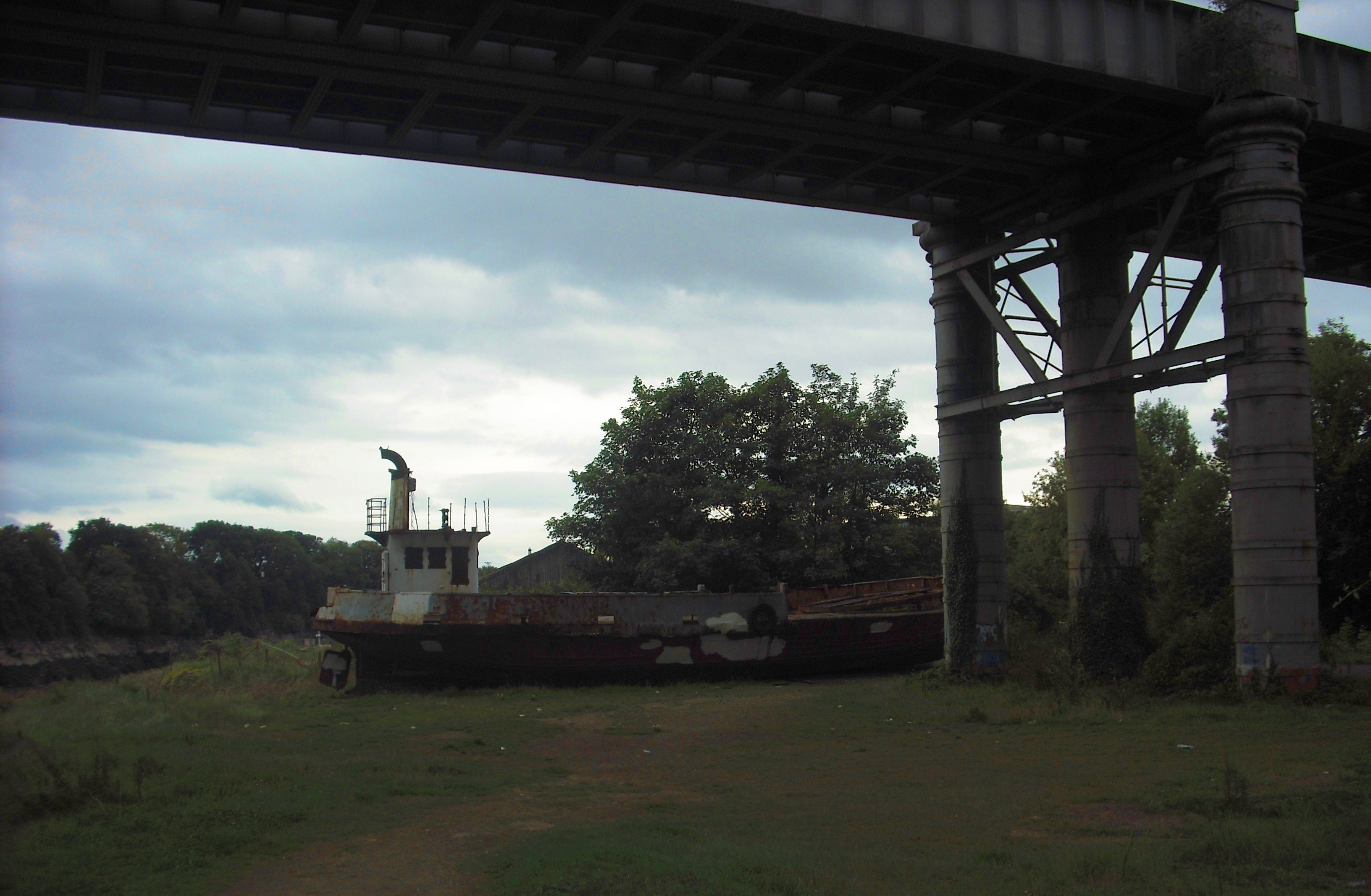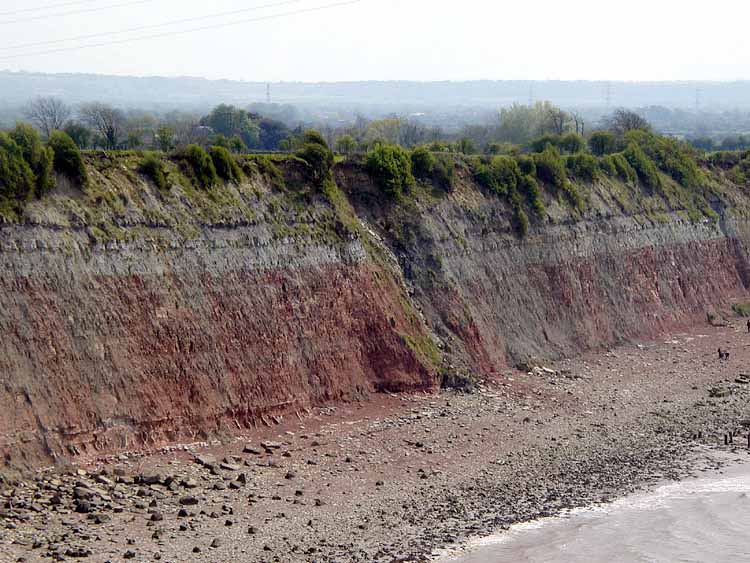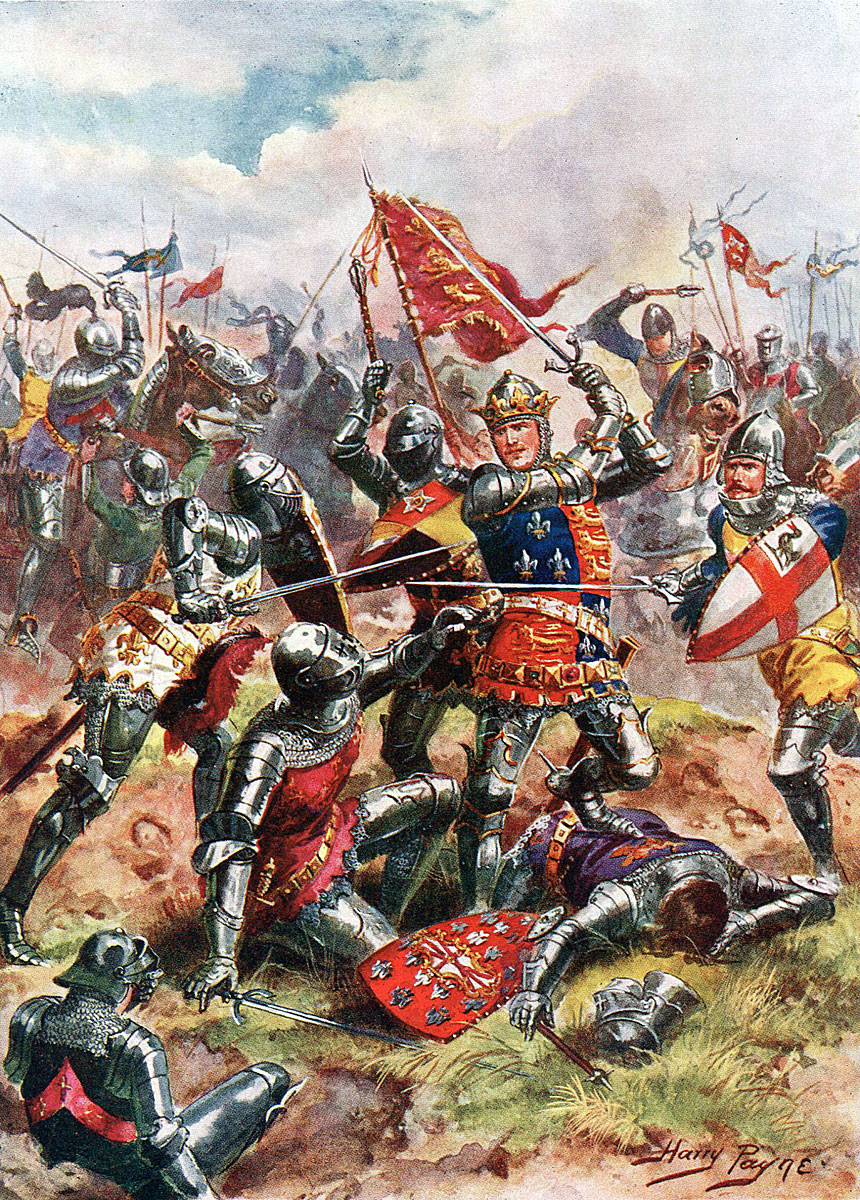|
Beachley
Beachley is a village in Gloucestershire, England, near the border with Monmouthshire, Wales. It is located on a peninsula at the confluence of the rivers River Wye, Wye and River Severn, Severn, where the Severn Bridge ends and the smaller secondary bridge over the River Wye begins, both bridges carrying the M48 motorway between England and Wales though the motorway is not directly accessible from the village. The tidal range on this stretch of water is the highest in the UK. Before the construction of the bridge it was a ferry port from where the Aust Ferry operated until 1966. The population in 2011 was 764. History Before the 9th century, the Beachley peninsula and the mouth of the Wye were part of the Wales, Welsh kingdom of Gwent. A small chapel was founded at what was then the southernmost point of the peninsula - now a tidal island known as Chapel Rock - traditionally in the 4th century by Tecla, a princess of Gwynedd who retired there as a hermit before being murdered by ... [...More Info...] [...Related Items...] OR: [Wikipedia] [Google] [Baidu] |
Severn Bridge
The Severn Bridge () is a Controlled-access highway, motorway suspension bridge that spans the River Severn between South Gloucestershire in England and Monmouthshire in South East Wales. It is the original Severn crossing, Severn road crossing between England and Wales, and took three and a half years to build, at a cost of Pound sterling, £8 million. It replaced the 137-year-old Aust Ferry. The bridge was opened in 1966 by Queen Elizabeth II. For thirty years, the bridge carried the M4 motorway. It was granted Grade I listed building, listed status in 1999. Following the completion of the Second Severn Crossing, the section of motorway from Olveston in England to Magor, Monmouthshire, Magor in Wales was designated the M48 motorway, M48. In addition to carrying the motorway, the bridge has service paths on each side which are open to pedestrians and cyclists. These carry National Cycle Route 4 and EuroVelo cycle routes, as well as hosting a weekly parkrun. History The f ... [...More Info...] [...Related Items...] OR: [Wikipedia] [Google] [Baidu] |
Aust Ferry
Aust Ferry or Beachley Ferry was a ferry service that operated across the River Severn between Aust and Beachley, both in Gloucestershire, England. Before the Severn Bridge opened in 1966, it provided service for road traffic crossing between the West Country and South Wales. The nearest fixed crossing was a round trip to Gloucester. The ferry ran from a pier at Old Passage near the village of Aust on the east bank of the Severn. It ran to a similar pier on the east of the Beachley peninsula. The car ferry, set up in 1926, only carried cars, pedestrians and motorcycles; goods vehicles were prohibited from accessing the ferry terminal. History There has been a passage across the Severn at this location since Roman Britain. It has been recorded the site of the ''Trajectus'' (''throwing-across'') where the Roman legions used to be ferried across the Severn. It was recorded in the 12th century when the de Clares, lords of Tidenham, granted quittance of the passage to the monk ... [...More Info...] [...Related Items...] OR: [Wikipedia] [Google] [Baidu] |
Tidenham
Tidenham () is a village and civil parish in the Forest of Dean (district), Forest of Dean of west Gloucestershire, England, adjoining the Wales, Welsh border. Tidenham is bounded by the River Wye (which forms the Welsh border) to the west and the River Severn to the south. Offa's Dyke runs through the western part of the parish, terminating at Sedbury cliff above the River Severn. History The village, once known as Dyddanhamme, is one of the most heavily documented Anglo-Saxons, Saxon villages in Britain and has been home to a grand manorialism, manor of some kind since at least the 6th century AD. The Saxon structure was owned by the Abbot of Bath, who retained some of the documents on what was then an important location until the Dissolution of the Monasteries. The current Tidenham Manor, built in 2005 in the Palladian style, overlooks the river and is adjacent to the Norman architecture, Norman parish church of Church of St Mary and St Peter, Tidenham, St Mary’s and S ... [...More Info...] [...Related Items...] OR: [Wikipedia] [Google] [Baidu] |
Aust
Aust is a small village in South Gloucestershire, England, about north of Bristol and about south west of Gloucester. It is located on the eastern side of the Severn estuary, close to the eastern end of the Severn Bridge which carries the M48 motorway. The village has a chapel, a church and a public house. There is a large area of farmland on the river bank, which is sometimes flooded due to the high tidal range of the River Severn, Severn. Aust Cliff, above the Severn, is located about from the village. The civil parish of Aust includes the villages of Elberton, Gloucestershire, Elberton and Littleton-upon-Severn. History Overview Aust, on the River Severn, was at one end of an ancient Roman road that led to Cirencester. Its name, Aust, may be one of the very few English place-names to be derived from the Latin ''Augusta''. "Augustin endeavoured to persuade the Welsh clergy to join him in preaching the Gospel to the Teutonic invaders, and held a meeting with them at or nea ... [...More Info...] [...Related Items...] OR: [Wikipedia] [Google] [Baidu] |
River Severn
The River Severn (, ), at long, is the longest river in Great Britain. It is also the river with the most voluminous flow of water by far in all of England and Wales, with an average flow rate of at Apperley, Gloucestershire. It rises in the Cambrian Mountains in mid Wales, at an altitude of , on the Plynlimon massif, which lies close to the Ceredigion/Powys border near Llanidloes. The river then flows through Shropshire, Worcestershire and Gloucestershire. The county towns of Shrewsbury, Worcester, England, Worcester and Gloucester lie on its course. The Severn's major tributaries are the River Vyrnwy, Vyrnwy, the River Tern, Tern, the River Teme, Teme, the Warwickshire Avon, and the River Stour, Worcestershire, Worcestershire Stour. By convention, the River Severn is usually considered to end, and the Severn Estuary to begin, after the Prince of Wales Bridge, between Severn Beach in South Gloucestershire and Sudbrook, Monmouthshire. The total area of the estuary's draina ... [...More Info...] [...Related Items...] OR: [Wikipedia] [Google] [Baidu] |
St Twrog
Saint Twrog - feast day 26 June - was a 6th-century Welsh saint who founded the church at Maentwrog, having come to Wales early in the Age of the Saints. Early life It is believed that Twrog was the son of Ithel Hael o Lydaw of Brittany. He was also the brother of Saint Tanwg of Llandanwg, Saint Tecwyn of Llandecwyn, Saint Tegai of Llandegai and Saint Baglan of Llanfaglan and Baglan. He was a member of the college of Bardsey which was founded as a monastery in 516 AD. Dedications There are three other dedications to Saint Twrog: Bodwrog in Anglesey ( St Twrog's Church, Bodwrog), Llandwrog near Caernarfon, and the ruin on Chapel Rock near Beachley by the Severn Road Bridge. Maen Twrog When Twrog first arrived in the village now called Maentwrog, the valley was very marshy, which provided him with the wattle that he would have needed to build his cell. Outside the church near to the belfry door is a large stone known as the Maen Twrog (maen being the Welsh for ... [...More Info...] [...Related Items...] OR: [Wikipedia] [Google] [Baidu] |
Severn Estuary
The Severn Estuary () is the estuary of the River Severn, flowing into the Bristol Channel between South West England (from North Somerset, Bristol and South Gloucestershire) and South Wales (from Cardiff, Newport to Monmouthshire). Its very high tidal range, approximately , creates valuable intertidal habitats and has led to the area being at the centre of discussions in the UK regarding renewable tidal energy. Geography Definitions of the limits of the Severn Estuary vary. In pre-modern times the area was commonly referred to as the River Severn, or the Severn Sea. Today, at the upstream boundary, the normal tidal limit of the river is at Maisemore weir (on the West Channel) and Llanthony Weir (on the East Channel), close to Gloucester Docks, although exceptionally high tides can overtop these weirs. Downstream, the estuary transitions into the open sea of the Bristol Channel. The distinction between the estuary and the Bristol Channel is ambiguous, with some sources ... [...More Info...] [...Related Items...] OR: [Wikipedia] [Google] [Baidu] |
Edward The Confessor
Edward the Confessor ( 1003 – 5 January 1066) was King of England from 1042 until his death in 1066. He was the last reigning monarch of the House of Wessex. Edward was the son of Æthelred the Unready and Emma of Normandy. He succeeded Cnut the Great's son – and his own half-brother – Harthacnut. He restored the rule of the House of Wessex after the period of Danish rule since Cnut conquered England in 1016. When Edward died in 1066, he was succeeded by his wife's brother Harold Godwinson, who was defeated and killed in the same year at the Battle of Hastings by the Normans under William the Conqueror. Edward's young great-nephew Edgar Ætheling of the House of Wessex was proclaimed king after the Battle of Hastings, but was never crowned and was peacefully deposed after about eight weeks. Historians disagree about Edward's fairly long 24-year reign. His nickname reflects the traditional image of him as unworldly and pious. Confessor of the Faith, Confess ... [...More Info...] [...Related Items...] OR: [Wikipedia] [Google] [Baidu] |
England
England is a Countries of the United Kingdom, country that is part of the United Kingdom. It is located on the island of Great Britain, of which it covers about 62%, and List of islands of England, more than 100 smaller adjacent islands. It shares Anglo-Scottish border, a land border with Scotland to the north and England–Wales border, another land border with Wales to the west, and is otherwise surrounded by the North Sea to the east, the English Channel to the south, the Celtic Sea to the south-west, and the Irish Sea to the west. Continental Europe lies to the south-east, and Ireland to the west. At the 2021 United Kingdom census, 2021 census, the population was 56,490,048. London is both List of urban areas in the United Kingdom, the largest city and the Capital city, capital. The area now called England was first inhabited by modern humans during the Upper Paleolithic. It takes its name from the Angles (tribe), Angles, a Germanic peoples, Germanic tribe who settled du ... [...More Info...] [...Related Items...] OR: [Wikipedia] [Google] [Baidu] |
Miranda Aldhouse-Green
Miranda Jane Aldhouse-Green, (''née'' Aldhouse; born 24 July 1947) is a British archaeologist and academic, known for her research on the Iron Age and the Celts. She was Professor of Archaeology at Cardiff University from 2006 to 2013. Until about 2000, she published as Miranda Green or Miranda J. Green. Early life and education She took her first degree at Cardiff University, her MLitt at Lady Margaret Hall, Oxford in 1974, and a PhD from The Open University in 1981. Academic career Aldhouse-Green was a member of the faculty at the University of Wales, Newport between 1993 and 2006, being appointed Professor of Archaeology in 1998. She previously held appointments at Worthing and Peterborough Museums and the Open University in Wales. Aldhouse-Green was a Fellow of the Society of Antiquaries of London (FSA) after her election in November 1979. She is a former Vice-President (2002), then President of The Prehistoric Society and has been included in Who's Who since 2004 ... [...More Info...] [...Related Items...] OR: [Wikipedia] [Google] [Baidu] |
Offa's Dyke
Offa's Dyke () is a large linear Earthworks (Archaeology), earthwork that roughly follows the England–Wales border, border between England and Wales. The structure is named after Offa of Mercia, Offa, the Anglo-Saxons, Anglo-Saxon king of Mercia from 757 to 796, who is traditionally believed to have ordered its construction. Although its original purpose is debated, it delineated the border between Angles (tribe), Anglian Mercia and the Welsh kingdom of Powys. The earthwork, which was up to wide (including its flanking ditch) and high, traversed low ground, hills and rivers. Today, it is protected as a scheduled monument. Some of its route is followed by the Offa's Dyke Path, a Long-distance trail, long-distance footpath that runs between Liverpool Bay in the north and the Severn Estuary in the south. Although the dyke has conventionally been dated to the Early Middle Ages of Anglo-Saxon England, research in recent decadesusing techniques such as radioactive carbon datingh ... [...More Info...] [...Related Items...] OR: [Wikipedia] [Google] [Baidu] |
Gruffydd Ap Llywelyn
Gruffudd ap Llywelyn ( – 5 August 1063) was the first and only Welsh king to unite all of Wales under his rule from 1055 to 1063. He had also previously been King of Gwynedd and Powys from 1039 to 1055. Gruffudd was the son of Llywelyn ap Seisyll, King of Gwynedd, and Angharad, daughter of Maredudd ab Owain, King of Deheubarth, and the great-great-grandson of Hywel Dda. After his death, Wales was again divided into separate kingdoms. Genealogy and early life Gruffudd was the son of Llywelyn ap Seisyll, who had been able to rule both Gwynedd and Powys, and of Angharad ferch Maredudd. On Llywelyn's death in 1023, a member of the House of Aberffraw, Iago ab Idwal ap Meurig, became ruler of Gwynedd and began his rise to power in Powys. King of Gwynedd and Powys (1039–1055) In 1039, Iago, King of Gwynedd, was killed (supposedly by his own men), his son Cynan was forced into exile in Dublin, and Gruffudd was made King. Soon after gaining power, he surprised a Merc ... [...More Info...] [...Related Items...] OR: [Wikipedia] [Google] [Baidu] |










